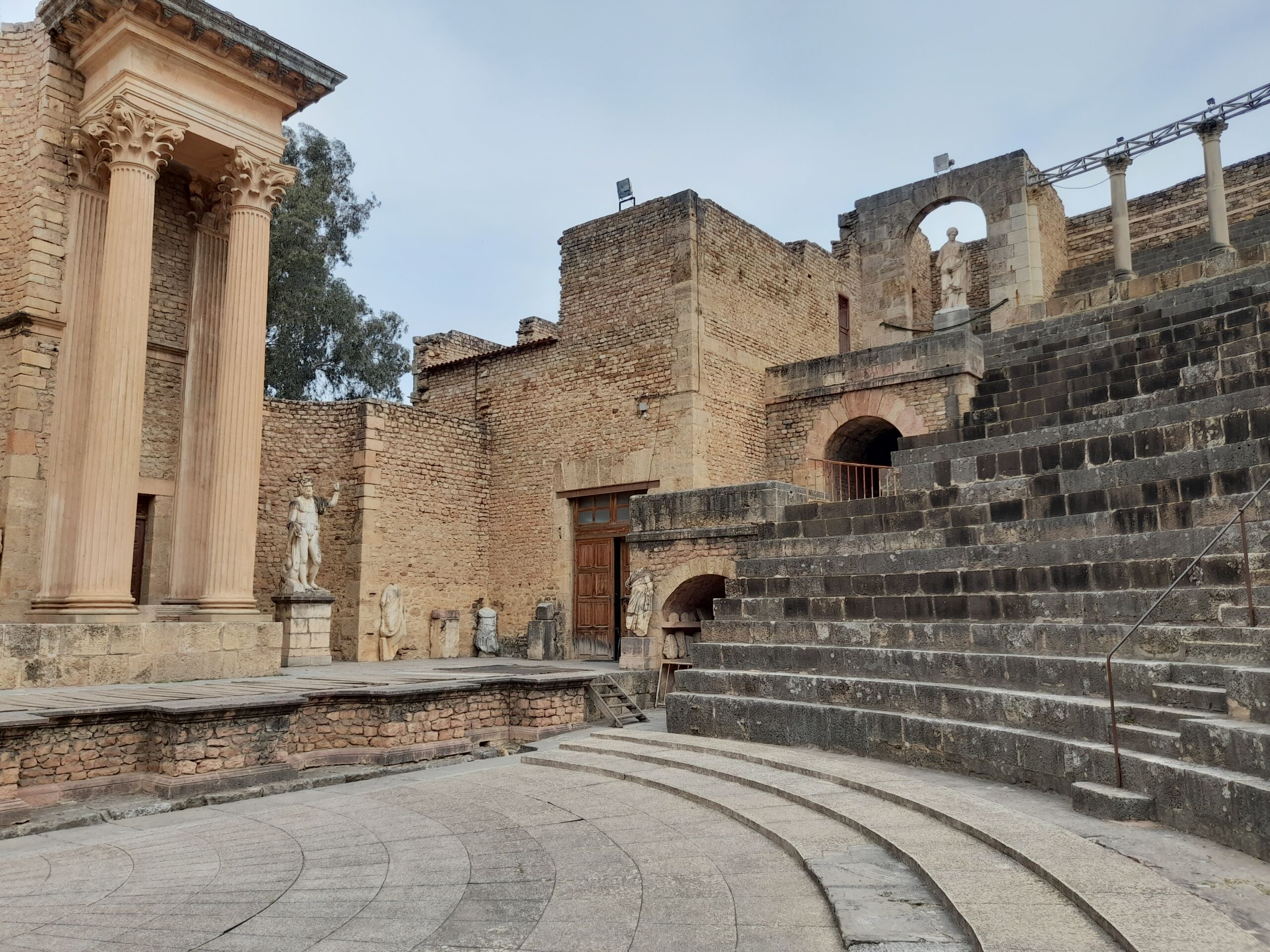The Roman theatre of Guelma was listed as a national heritage site in 1900. It dates from the end of the 2nd century and the beginning of the 3rd century AD under the reign of the Emperor Septimius Severus.
It is a natural pit with a semicircular shape, its sides were leveled and covered with alabaster and cut stones to make terraces and seats, forming the so-called amphitheatre. The amphitheatre is surrounded by a thick, high wall with doors and niches that had statues, according to some historians. This theatre can accommodate about 4,500 spectators. The theatre is divided into three sections:
– The amphitheatre: It is dug into a natural slope and the quadrilateral of cut stone was used in its construction. This section is surmounted by three large niches that once housed statues of gods or distinguished personalities.
– The orchestra: its shape is semicircular, its floor was made of pink alabaster and its semicircular section was dedicated to the seating of nobles and sovereigns.
– The stage: its shape is rectangular, and performances were projected on it. The front of the theatre is not original, but was rebuilt in 1904 by Mr. Joly, who used some of the archetypal remains of the architectural elements and building materials that were scattered around.
This building, listed in 1900, underwent several restorations in the 6th century AD, in the French period, and in the year 2000.




